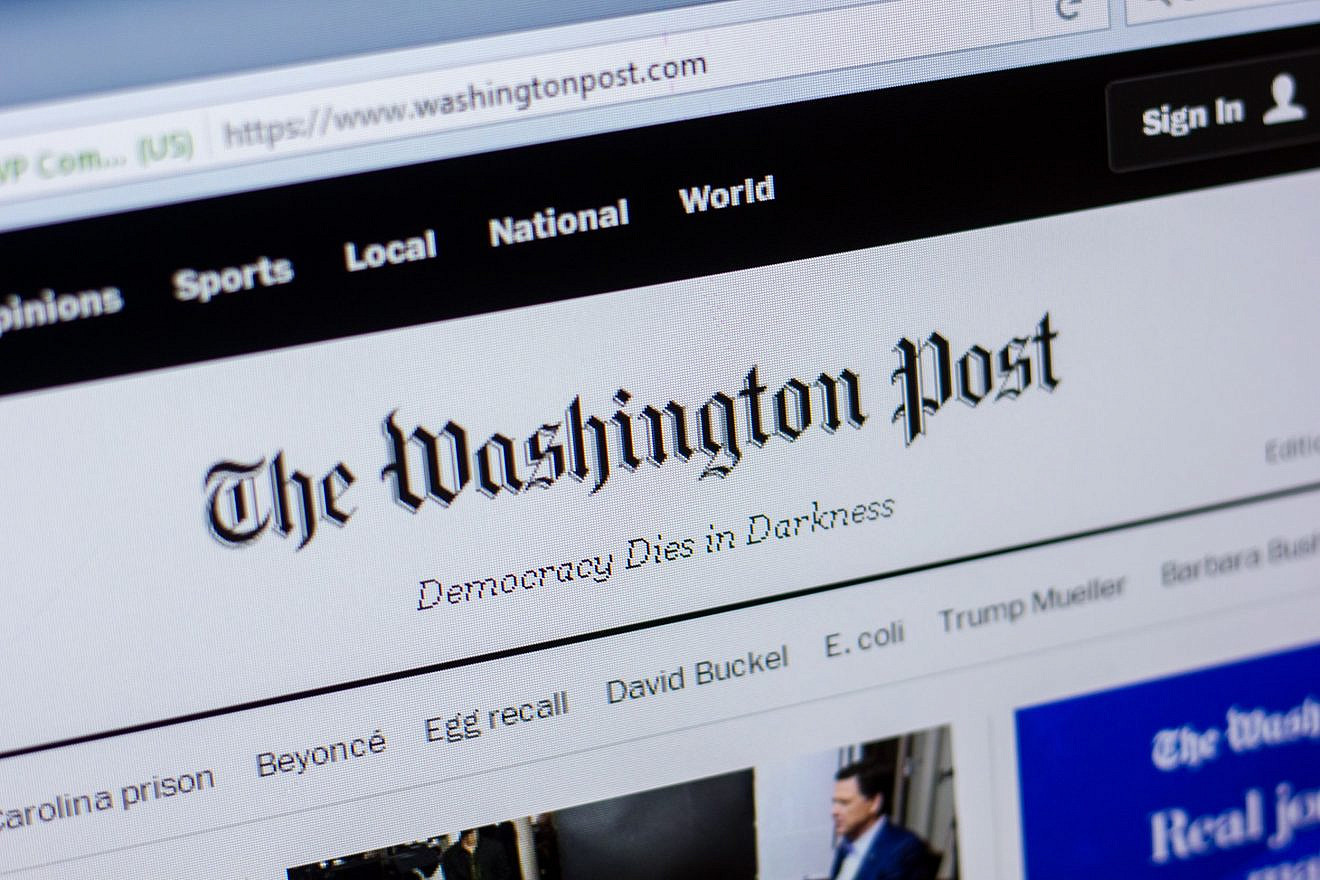“One cannot and must not try to erase the past merely because it does not fit the present,” former Israeli Prime Minister Golda Meir purportedly said. But The Washington Post, which fancies itself an arbitrator of truth, is trying to do just that. Like the terrorists it effectively defends, the Post’s coverage of Israel’s latest counterterrorist operation in the town of Jenin is prone to misfires.
The Post began by trying to offer a “timeline on the Israeli-Palestinian conflict.” Despite assigning three reporters to the task, the Post failed. It implied that the conflict began in 1948 with Israel’s Declaration of Independence. This is false.
What is more accurately called the Israeli-Islamist conflict began decades before. As the Committee for Accuracy in Middle East Reporting and Analysis (CAMERA) has highlighted, Arab leaders in British-ruled Mandatory Palestine began to oppose any semblance of Jewish self-determination in the Jewish people’s ancestral homeland as early as 1920.
Arab leaders like Amin al-Husseini, among others, incited anti-Jewish riots throughout the land, including pogroms in Jerusalem in 1920 and 1921. Importantly, Husseini initially did so while agitating for the Arab population of the area to join the short-lived Syrian kingdom of Faisal. He did not advocate for a Palestinian Arab state. He wanted a state in which Jews would be denied social and political equality.
Arab violence reached its zenith in the 1929 massacres in Hebron and elsewhere. “More than 60 Jews—including many women and children—were murdered and more than 50 were wounded,” a subsequent investigatory commission would note.
That violence, historian Anita Shapira observed, marked a “turning point” in the emerging conflict. Yet the Post ignores it entirely. It also fails to note that Arab leaders like al-Husseini would spend the 1930s and early 1940s allying themselves with the fascist powers of Mussolini’s Italy and Hitler’s Germany. They even secured arms from both nations.
Terrorist groups like the Green Hand were formed in the 1930s that attacked Jews, rival Arab groups open to compromise and the ruling British authorities. Sheikh Izz ad-Din al-Qassam, a fiery Islamist from what is now Syria, launched his own terrorist organization, which perpetrated scores of attacks before British police cornered and killed him in 1935. Today, Hamas names the rockets it fires at Israeli civilians in al-Qassam’s honor.
The Post omits all of this history. By starting its timeline in 1948, the Post misses three pivotal decades that feature prominently in the works of historians as varied as Shapira, Benny Morris and Bruce Hoffmann. A new book by Oren Kessler, entitled Palestine 1936, also argues for the importance of this period.
The Post’s timeline also omits numerous instances in which Palestinian Arab leaders were offered a state of their own. Such proposals were made more than a decade before 1948, as well as in 1947, 1967, 2000, 2001, 2008, 2014 and 2016, among others. All were rejected by Palestinian Arab leaders. Not even one appears on the Post’s timeline.
The Post’scoverage of the Jenin operation is misleading in other respects.
First, the operation was the result of two factors: The Palestinian Authority’s complicity and Iran’s ambitions.
The P.A. pays tax deductible salaries to terrorists and their families. Its media and educational institutions incite anti-Jewish violence. The P.A. Security Forces (PASF), trained and armed by the U.S. and others, have a long history of carrying out terror attacks.
The P.A. is also deeply repressive, which the Post frequently glosses over. The P.A. has failed to hold elections and its head Mahmoud Abbas is currently in the 18th year of his four-year-term in office. The P.A.’s legislature hasn’t met since 2006.
The unpopularity of Abbas, Fatah and the P.A. has given Iran and its proxies room to maneuver. Tehran is committed to Israel’s destruction and backs groups like Hamas, Hezbollah and Palestinian Islamic Jihad—all U.S.-designated terrorist groups. These groups are gaining in popularity in areas of Judea and Samaria ruled by the P.A. The PASF refuses to oppose them. Abbas’s Fatah movement has openly sided with terrorists in towns like Jenin and Fatah operatives have taken part in the violence.
This crucial context is missing from most of the Post’s coverage of the Jenin operation. Worse still, the Post attempts to blame the Jewish state for Palestinian terrorism. Some reports insinuated that the increase in violence is due to the reelection of Prime Minister Benjamin Netanyahu. This too is false. It is also a sign of how politicized and narrative driven the Post’s coverage of Israel has become.
As organizations like the Foundation for Defense of Democracies (FDD) have documented, the increase in violence dates back nearly two years. FDD has published graphs charting the increase, all of which are open source and readily available.
For its part, CAMERA has highlighted the deteriorating security situation for nearly two years, publishing analyses like “Palestinian political chaos prevents the potential for peace” (July 5, 2021), “The Palestinian Authority is on the precipice” (Nov. 18, 2021) and “Will Iran Soon Control the West Bank?” (Sept. 18, 2022), among others. Yet in report after report, the Post either barely mentions or omits the role played by the P.A. and Iran.
Worse still, the newspaper frequently refers to U.S.-designated terrorist groups as “armed resistance.” CAMERA has told Post staff that this is simply a euphemism for terrorism. What these groups are “resisting” is the existence of the Jewish state and its people.
Elsewhere, The Washington Post has continued its well-worn habit of treating the Palestinian Health Ministry as a credible source—overlooking the fact that it is run by Hamas. The Post continues to publish casualty statistics that omit the fact that most Palestinians killed in what the newspaper usually refers to as “clashes” or “cycles of violence” have been linked to terrorist groups. For good measure, the Post, which claims to lament the rise of disinformation, repeated these errors on its Instagram page.
At The Washington Post, who needs facts when narratives, amnesia and distortion of history reign supreme?


























